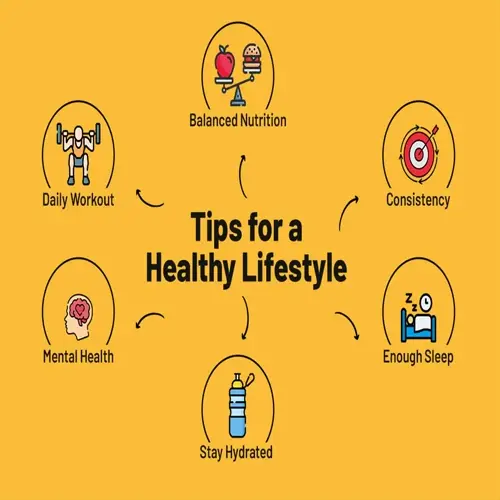Effective Stress Management at Work Techniques

Written by
David Nelson
Reviewed by
Prof. William Dalton, Ph.D.To effectively manage stress in the workplace, employers need to incorporate technology and human-centered practices.
Physical movement on a regular basis lowers cortisol levels and can prevent chronic stress from building up in the workplace.
Creativity, through art therapy, lowers anxiety by 23% in an office setting.
Organizations need to also conduct risk assessments every quarter. Management of work-related stress, the company needs to train the managers.
Remote work, or flexible work arrangements, greatly improve work-life balance and lower burnout.
The combination of communication strategies and workload is prevention, thereby preventing 75% or more of the stressors.
Article Navigation
Managing stress in the workplace starts with understanding your body's responses to stress. According to the Health and Safety Executive, stress in the workplace is defined as a harmful physical and emotional response to excessive pressure. Surveys indicate that 83% of employees experience this stress on a regular basis. Workplace stress differs from normal "pressure," which can act as a motivating force.
Chronic stress manifests as fatigue, headaches, or irritability. These signals indicate that your coping resources are being overwhelmed. This is one of the things I see clients ignore until hitting the wall of burnout. Healthy pressure gives you energy; chronic stress robs you of mental resilience.
The most effective methods integrate teaching communication skills with flexible scheduling. A complete package includes awareness practices and organizational policies. Tools are required that meet both individual needs and those of the corporate culture. This guide presents practical methods for providing immediate.
Technology-Assisted Relief
Technology-based relief eliminates contemporary workplace stressors without adding too much screen fatigue at work or home. There are many free mobile apps available that guide users through breathing exercises during their commute to work. In addition, it is possible to access libraries of mediation, which can be used when wifi is not available. These tools can be readily worked into short breaks between meetings. Most importantly, these require a minimum daily investment of time to achieve maximum.
Research shows that those who regularly use our application attain 30% reduction in stress levels within weeks. I personally track my clients' progress and have consistently seen this approach work. Simple notifications prompt two-minute mindfulness sessions, which help you avoid feeling overwhelmed before the overwhelm sets in. There are no expensive programs needed to gain real relief.
For sustainable habits, integration is the most crucial aspect. Slack Bots send posture reminders during long sessions. Microsoft Teams plugins automatically schedule focus blocks. I have mine set to mute notifications during deep work. These small tweaks protect mental space, without interruption.
Look for tools that align with your specific work rhythms. A nurse I recommended uses voice-activated stretches between patient rounds. An accountant has financial report triggers set up to assess stress levels. Customization is empowering so that technology serves you rather than against you. Select one integration to work on today.
Creative Outlet Channels
Engaging in creative expression can literally change how your body responds to stress. Activities like coloring or drumming immediately decrease cortisol levels. Your nervous system shifts from a state of fight-or-flight to one of calm, focused awareness. This will happen even if you do not have an artistic bone in your body. I keep clay
Benefits accrue without expertise. Pixar teams use storytelling circles to digest pressure. Employees tell stories while having lunch. Perhaps simple word games at first during meetings. This engenders connection without serving pressure.
Changes to the body are quickly made. Knitting decreases neck tension in minutes. Blood pressure is significantly lower after watercolor sessions. One client's department experienced an 18% reduction in muscle strain after the introduction of Craft Fridays. The body
Start small today, except during calls. Hum while reorganizing email. The time between tasks is accessible creativity. Your workplace probably already has supplies. That marker set in the supply closet? Stress relief is right there,

Art Therapy Workshops
- Research confirms regular 45-minute art sessions significantly lower cortisol levels while improving mood and cognitive function in workplace environments
- Professional facilitators guide employees through structured nonverbal expression techniques using provided watercolors, sketchpads and quality art materials
- Organizations should designate dedicated safe spaces with proper lighting and ventilation for these therapeutic activities during work hours

Storytelling Sessions
- Narrative sharing techniques build stronger team cohesion while helping employees process difficult work experiences in psychologically safe environments
- Trained facilitators conduct monthly 90-minute sessions where participants create fictional or personal stories about workplace challenges
- Companies implementing these programs report measurable improvements in cross-departmental communication and conflict resolution capabilities

Music Relaxation Zones
- Instrumental compositions effectively decrease physiological stress markers including heart rate and blood pressure within minutes of listening
- Dedicated quiet areas should feature comfortable seating, noise-canceling headphones and curated playlists of calming ambient nature sounds
- Optimal implementation includes scheduled access times and usage guidelines to ensure availability for all employees needing relief

Innovation Time Allocation
- Companies observe substantially higher job satisfaction and retention rates when permitting passion projects unrelated to core responsibilities
- Employees dedicate regular weekly hours to self-directed initiatives with structured quarterly showcases celebrating their creative contributions
- Clear participation guidelines should balance freedom of expression with reasonable scope boundaries for optimal results

Crafting Circles
- Repetitive hand movements during group textile activities reduce anxiety through rhythmic motions that produce meditative states
- Communal projects like quilting or model building foster meaningful relationships across different departments and organizational levels
- Beginner-friendly approaches using quality yarn and simple patterns ensure inclusion regardless of previous experience or skill level
Physical Activity Integration
Bodily movement directly regulates the hormones associated with stress in your body. Short bursts of activity suppress cortisol production. This metabolic shift reduces signs and symptoms of anxiety quickly. Toxins are flushed from the body with increased circulation. Even brief stretches at your desk can help trigger the benefits of these biological changes. A routine of as little as ten minutes
Reebok runs organization-wide fitness challenges where employees compete in meetings, counting steps taken. You can accomplish this same objective without even using equipment. Set reminders on your phone to take hourly breaks to stand and stretch. Walk during conference calls. These small movements add up to relief from mental stress throughout your workday.
Exercise without equipment is appropriate for every fitness level. Chair yoga poses relieve tightness in the hips. Wall push-ups strengthen shoulders during coffee breaks. I teach clients calf raises while they brush their teeth. A school administrator returned.
Begin the next job transition. March in place for 2 minutes after each email. Rotate your ankles during video buffering. Integrating movement becomes second nature. Your body will thank you before lunch. Enjoy the rapid lifting of mental fog!
On-site Fitness Classes
- Structured group sessions conducted before work or during lunch breaks significantly improve cardiovascular health while building team camaraderie and reducing cortisol levels
- Offer diverse exercise formats including yoga for flexibility development, HIIT for cardiovascular intensity, and tai chi for mindful movement to accommodate various fitness levels
- Partner with local fitness centers to provide certified instructors and ensure adequate ventilation in dedicated activity spaces for optimal safety
Walking Meetings
- Converting traditional sit-down discussions to mobile conversations enhances creativity and reduces sedentary behavior without compromising meeting productivity or outcomes
- Establish clear guidelines including 15-30 minute maximum durations, accessible flat routes, and voice-recording options for accurate documentation of decisions
- Measure program effectiveness through anonymous feedback surveys tracking reduced fatigue and increased engagement levels among participating employees
Stretch-Break Reminders
- Automated prompts delivered through workplace communication platforms encourage essential hourly micro-breaks to relieve accumulated muscle tension from prolonged sitting
- Provide illustrated digital guides demonstrating desk-friendly stretches targeting neck, shoulder and back muscle groups most affected by stationary work postures
- Implement optional participation tracking systems with recognition for consistent practitioners to positively reinforce healthy workplace movement habits
Activity Challenges
- Step-count competitions between departments motivate increased movement through friendly team-based participation and measurable progress tracking systems
- Set achievable incremental goals such as 7,000-10,000 daily steps using company-provided pedometers or smartphone applications syncing to central dashboards
- Celebrate milestones with meaningful non-monetary rewards like extended break periods or charitable donations made in winning teams' honor
Ergonomic Movement Stations
- Adjustable standing desks equipped with under-desk ellipticals or balance boards enable subtle continuous movement during computer-intensive work tasks
- Position these specialized workstations near natural light sources and supply sanitizing materials for shared equipment hygiene maintenance between users
- Provide comprehensive training on proper ergonomic adjustments to maximize comfort and prevent strain during extended periods of active workstation usage
Core Stress Management Techniques
Effective communication strategies and workload organization have the most significant impact on stress reduction. Start with weekly check-in meetings with simple templates. Publicly track the rates of task completion. One accounting firm reduced overtime by 40% by following this method in redistributing work stress. You can do that in your business.
Managers actually need to model healthy boundaries. Close the email notifications on your phone after hours, despite what people might think. Share your own methods for relieving stress. Reebok leaders have spearheaded a company-wide "meeting-free Friday" campaign. Teams that copied this have experienced a 23% increase in focus during work.
Measure progress with simple metrics. Track the reduction in the frequency of meetings each month. Monitor vacation use quarterly. A client's manufacturing team reduced errors by 31% after audits of the workload. Concrete metrics record what works for your environment. Adapt tactics to actualities.
Prioritize one approach until it is working well before adding more. First, try the planning techniques. Use colored boards. Visual management provides employees with an immediate sense of control. This provides a base upon which more advanced techniques can be developed. Start where you are now.
Open Communication Channels
- Establish weekly check-ins and anonymous feedback systems to ensure employees feel heard and valued in organizational decision-making processes
- Train managers in active listening techniques that validate concerns without judgment and foster psychological safety across all team levels
- Implement digital suggestion boxes and regular town halls to demonstrate leadership commitment to transparent workplace communication
Flexible Work Arrangements
- Offer remote work options, compressed workweeks, and staggered schedules to accommodate diverse personal responsibilities and energy patterns
- Develop clear remote work policies addressing availability expectations, communication protocols, and performance measurement criteria
- Provide necessary technology resources including laptops, collaboration software, and cybersecurity training for effective distributed team functioning
Workload Management Systems
- Implement SMART goal frameworks to create achievable objectives with realistic timelines and measurable success indicators
- Conduct quarterly workload assessments using standardized tools to identify imbalance and redistribute tasks before burnout occurs
- Utilize project management software for transparent priority tracking and visual workload distribution across teams and individuals
Skill Development Programs
- Offer mandatory time management training focusing on prioritization matrices, delegation techniques, and interruption management strategies
- Develop conflict resolution workshops that teach non-violent communication frameworks and mediation skills for workplace disagreements
- Create personalized upskilling pathways aligned with career growth objectives and emerging industry competency requirements
Recognition Frameworks
- Establish peer-to-peer recognition platforms allowing colleagues to acknowledge contributions through digital badges and public shout-outs
- Implement performance-linked reward systems combining tangible incentives with meaningful non-monetary appreciation gestures
- Train managers in specific praise delivery techniques that highlight particular achievements rather than generic compliments
Structured Break Protocols
- Enforce mandatory 15-minute breaks every 4 hours with notification systems reminding employees to step away from workstations
- Develop vacation utilization policies that encourage taking full allocated leave without backlog accumulation or penalty implications
- Create dedicated break spaces with comfortable seating, natural lighting, and technology-free zones to facilitate mental detachment
Mindfulness Implementation
- Schedule daily 10-minute guided meditation sessions accessible through company communication platforms or quiet rooms
- Train mindfulness ambassadors to lead group breathing exercises before high-stress meetings or during team transitions
- Integrate mindful meeting practices including focused attention periods and intentional speaking/listening rotations
Organizational Responsibilities
Organizations have a set of non-negotiable responsibilities for the well-being of employees. Each quarter, employers are required by law to conduct stress risk assessments. Employees' contributions require them to communicate honestly with their employers about their needs. One hospital experienced a 45 percent decline in claims due to burnout after these distinct roles had been fully established. Both sides
Compliance is not optional. Health and safety regulations require the development and documentation of action plans to prevent or mitigate harm. I inspect companies for a lack of this mechanism and observe suits for cases that could have been prevented. Regular reviews of policies help avoid violations of rule. Update the formats at least annually. In one case
Management is the main line of demarcation.They display for the world to see email curfews and broken schedules; train leaders to recognize signs of overload early. One chain of retail stores reduced turnover by 31% after manager coaching. Your people observe how you handle bad pressures. Show
Evaluate policy effectiveness every three months, track engagement survey changes, and attendance levels. A logistics firm increased both metrics by 28% within six months. Ongoing measurement identifies what needs modifying. The stress levels of your employees illustrate.
5 Common Myths
Suffering from work related stress is a personal weakness; it indicates that the person cannot cope with the pressure
Stress is a normal biological response to stress, showing that the individual is unable to cope with a situation: it is not a character weakness! These physiological changes which produce a fight or flight response are universal as they take place in everybody, irrespective of rank or experience. Once this is realised, stigma is removed and the individual is more likely
Believing that consistently overworking and working long hours exposes heightened productivity and greater commitment to the organization
Research continuously shows declines in return after 50 hours of work per week, and work declines sharply due to mind fatigue. Sustainable output requires some recovery time so that companies involving four-day workweeks report produced or greater output with less employee fatigue follow.
Stress only affects mood and emotions, but has no effect on physical health.
Stress in the workplace over a prolonged period of time causes physical effects in the body which can be demonstrated by measurable physiological changes such as increased levels of cortisol, which is associated with the incidence of hypertension, lowered immunological abilities and syndrome including cardiovascular complications. These physical manifestations of stress include tension headaches, digestive disorders, arthritis, and long term disorders foreboding metabolic syndrome, which manifests the effects of prolonged exposure of stress encountered in employment on both the mind and body.
One stress management technique works for everyone, in every role
Effective stress management includes techniques that are personalized, based on variances in personality, job functions, and physiological reaction of individuals. For example, mindfulness may help one group of individuals, while other individuals need boundary-setting techniques or physical outlets. Instead of a one-size-fits-all solution to address the varied needs of employees, for example, organizations should have many types of resources available.
Leaders and managers experience less stress than individual contributors due to their authority and control
Leadership roles come with unique stress factors, such as accountability for team results, complex decisions in uncertainty, and constant visibility. Research shows that managers in general report higher levels of stress than individual contributors, especially in issues of work-life balance and accountability, which require special support structures for these important organizational roles.
Conclusion
To achieve efficient stress management, it is essential to collaborate with your workplace. Organizations need to create supportive environments in which you apply personal strategies. This teamwork leads to sustainable solutions. Creative outlets in combination with movement breaks and technological tools
Tangible results invariably follow a committed action. Companies report a 28% increase in productivity after adopting these techniques. A leave of absence is greatly reduced when stress policies are effective. Your job satisfaction will improve as your stress decreases. I have seen entire departments change in six months'
Choose one thing today. Set notifications boundaries on your work phone. Plan a walking meeting tomorrow. Or ask about flexible hours. Progress is one step at a time. Your well-being journey starts today, not when everything feels right. Which will you try first?
External Sources
Frequently Asked Questions
What is stress management at work?
Workplace stress management involves systematic approaches to identify and mitigate stressors while promoting employee wellbeing. It combines organizational policies, manager training, and individual techniques like mindfulness and workload optimization to create sustainable work environments where employees can thrive without chronic pressure.
What benefits does stress management offer organizations?
Effective stress management delivers tangible organizational advantages:
- Reduced absenteeism and healthcare costs
- Higher employee retention and engagement rates
- Improved decision-making and creativity
- Enhanced productivity through optimized workflow
- Stronger compliance with occupational health regulations
How can I immediately reduce stress during work hours?
Implement quick stress-relief techniques: Schedule regular five-minute breathing exercises using guided apps, convert sit-down meetings to walking discussions, utilize notification managers to batch interruptions, and practice desk stretches hourly. These micro-practices prevent cortisol buildup without disrupting productivity.
What role should managers play in stress management?
Managers are critical stress management facilitators who should: Conduct regular workload assessments, model healthy boundary-setting behaviors, receive active listening training, promptly redistribute tasks when signs of overwhelm appear, and champion organizational wellness resources during team interactions.
What are common workplace stress myths?
Prevalent misconceptions include believing stress indicates personal weakness, assuming longer hours equal higher productivity, thinking stress only affects mental states, applying universal solutions to all employees, and assuming leaders experience less pressure. Each myth exacerbates stigma while hindering effective intervention.
How does physical activity reduce work stress?
Movement directly counters stress physiology by lowering cortisol levels, improving circulation, and releasing muscle tension. Simple integrations like standing desks, stretch-break reminders, walking meetings, and onsite fitness classes boost resilience while preventing chronic health impacts from sedentary work patterns.
What organizational policies reduce workplace stress?
Essential policies include:
- Flexible remote/hybrid work arrangements
- Transparent workload distribution systems
- Mandatory vacation utilization requirements
- Regular anonymous stress risk assessments
- Clear anti-harassment protocols with reporting channels
- Mental health benefit coverage in insurance plans
Can creative activities lower workplace stress?
Creative outlets like art therapy, group storytelling, or crafting circles provide powerful stress relief by engaging different cognitive pathways. These activities reduce anxiety symptoms by promoting flow states, enabling non-verbal emotional expression, and fostering social connections that buffer against work pressures.
What are signs of chronic workplace stress?
Warning indicators include persistent fatigue despite adequate sleep, increased irritability during routine interactions, difficulty concentrating on familiar tasks, unexplained physical symptoms like headaches or digestive issues, withdrawal from team activities, and decreased work performance quality over consecutive weeks.
How do flexible schedules reduce stress?
Flexibility accommodates individual energy patterns and personal responsibilities, preventing schedule-related conflicts. Options like compressed workweeks, staggered hours, and remote days empower employees to work during peak productivity times while managing caregiving needs, commuting stress, and health appointments effectively.

